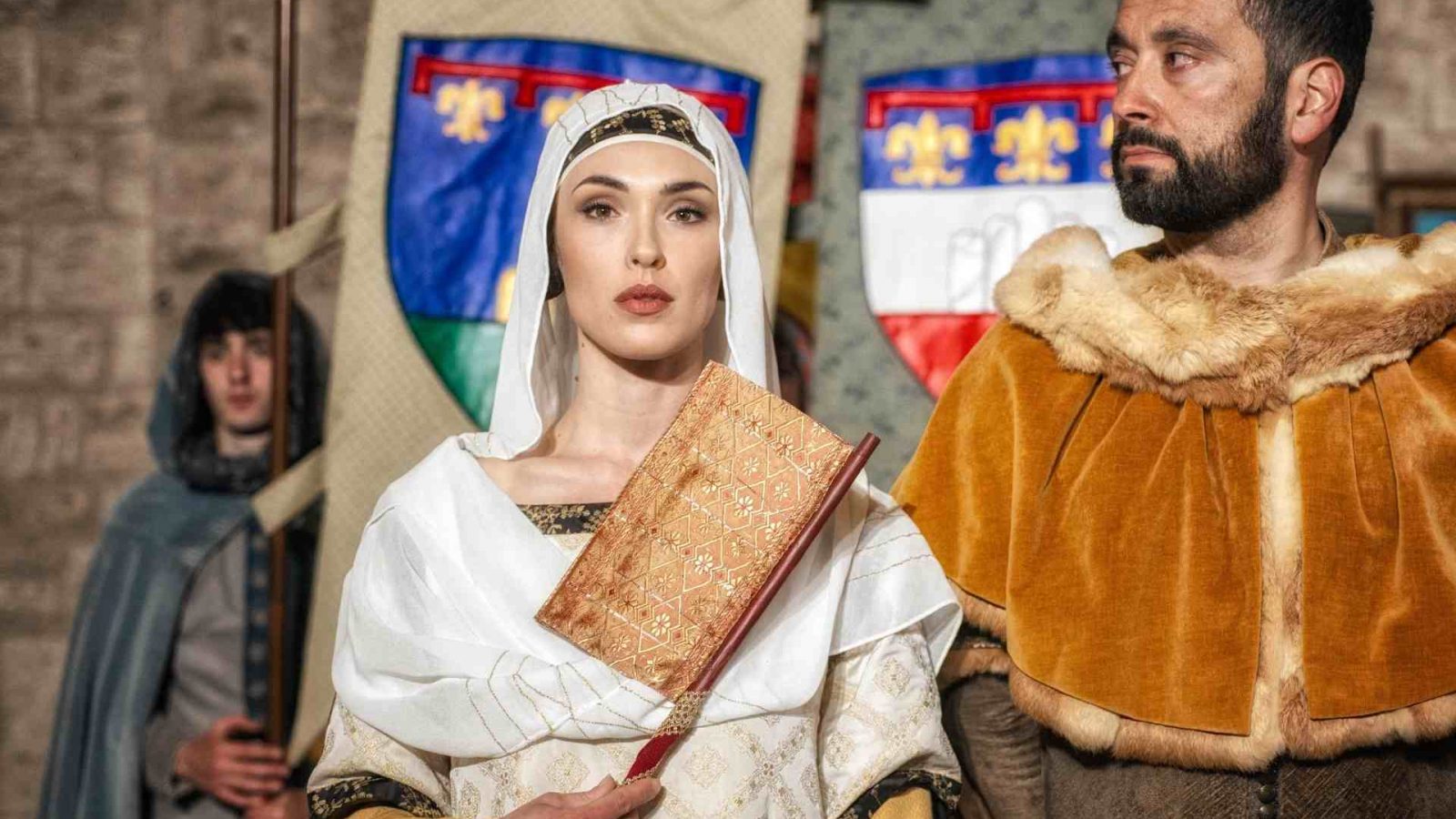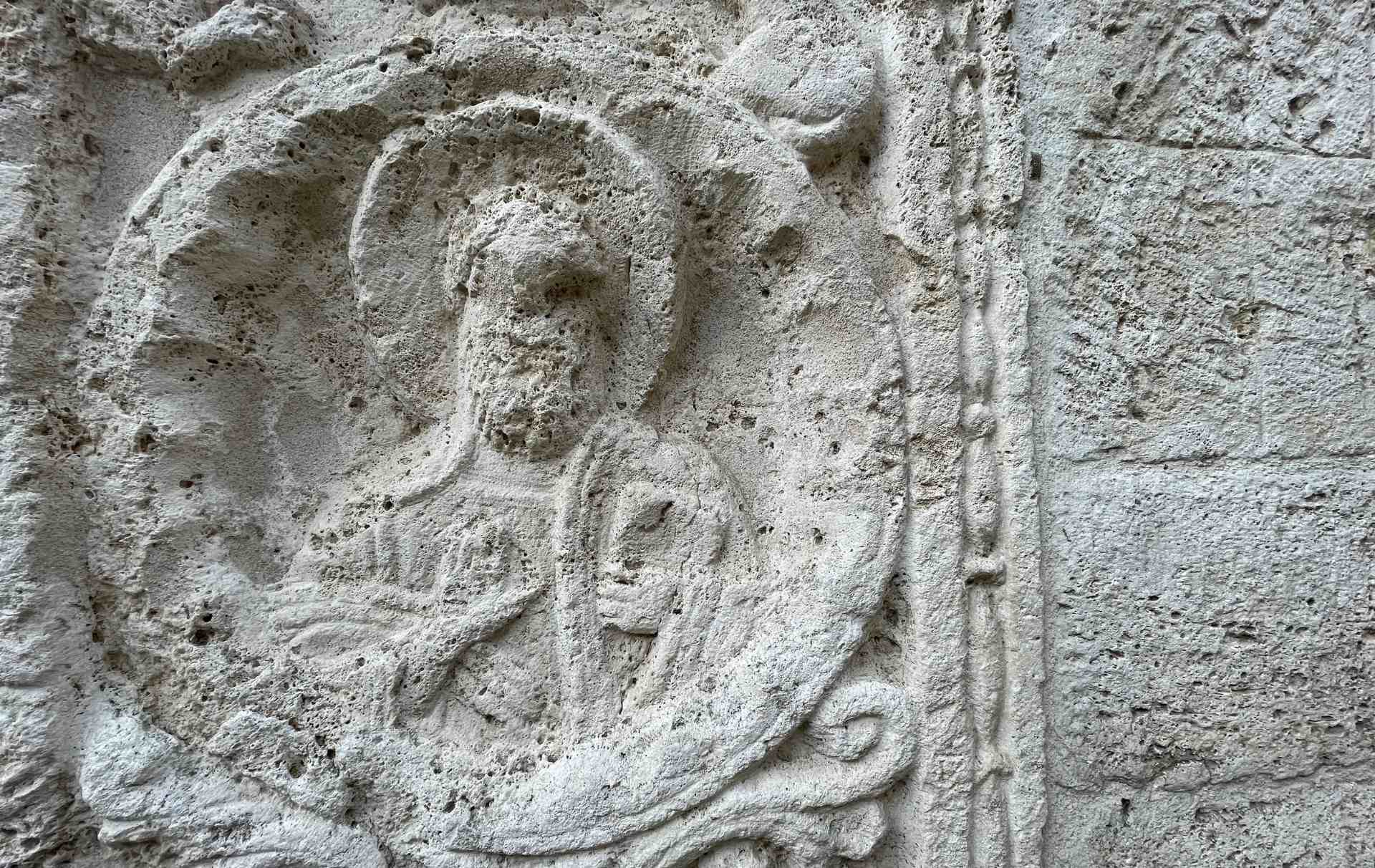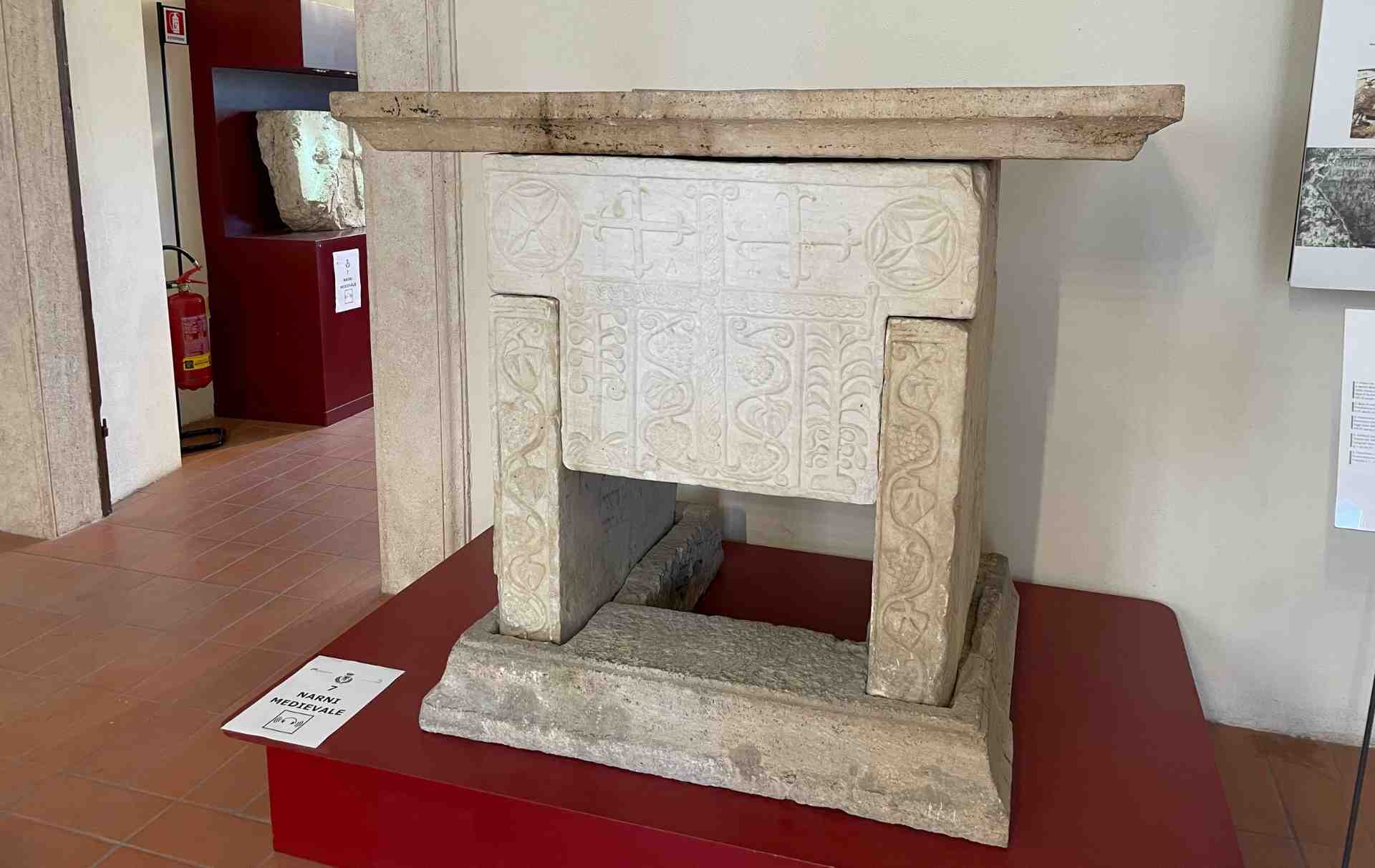The fall of the Roman Empire and the barbaric invasions hit the territory of Narnia which, as for other towns along the Via Flaminia, was incorporated in that one which then became the Byzantine corridor.
Passed under the influence of the Papal States, began in the late Middle Ages that growth that led it to be a point of reference among the municipalities in the center of the peninsula, so much so as to be known as “superb” city and point of territorial reference between the municipalities of the center of the peninsula.
Narnia in the Early Middle Ages.
Starting from the XI century the medieval town – that would have rebelled in 1112 to Pope Pasquale II, in 1167 to Frederico Barbarossa, and in 1242 would have sided with Rome and Perugia against the Empire – projected its territorial influence on San Gemini, Stroncone, Calvi, Otricoli and Castiglione.
Is in this period that were made the first tower houses which were going to caratherized materially the status of some noble families and it is in this period that was built the Church of San Giovenale which, only in the next century thanks to Pope Eugenio III, would become the Cathedral of Narni.
In 1143 Narnia was a free municipality and started a period of radical transformations:
- the Platea Major – now Piazza dei Priori – went to replace the area of the Roman forum;
- there were built the big civil and religious buildings as the Palazzo del Podestà, the Palazzo dei Priori, the Churches of San Domenico and Sant’ Agostino decorated with works of national artists.
In 1373 was fiefdom to the Orsini to whom went back in 1409. In the XV century it was occupied by Ladislao, king of Sicily, and then absorbed by the Papal States thanks to the intervention of Braccio da Montone.
From this period onwards , Narni entered the controlled territory of the papal state thus losing its independence, and under the pontificate of Gregory XI was built, by Cardinal Albornz, on older pre-existence, the massive Fortress that still dominates the city from above.
Narnia in the Late Middle Age.
Starting from the XI century the medieval town – that would have rebelled in 1112 to Pope Pasquale II, in 1167 to Frederico Barbarossa, and in 1242 would have sided with Rome and Perugia against the Empire – projected its territorial influence on San Gemini, Stroncone, Calvi, Otricoli and Castiglione.
Is in this period that were made the first tower houses which were going to caratherized materially the status of some noble families and it is in this period that was built the Church of San Giovenale which, only in the next century thanks to Pope Eugenio III, would become the Cathedral of Narni.
In 1143 Narnia was a free municipality and started a period of radical transformations:
- the Platea Major – now Piazza dei Priori – went to replace the area of the Roman forum;
- there were built the big civil and religious buildings as the Palazzo del Podestà, the Palazzo dei Priori, the Churches of San Domenico and Sant’ Agostino decorated with works of national artists.
In 1373 was fiefdom to the Orsini to whom went back in 1409. In the XV century it was occupied by Ladislao, king of Sicily, and then absorbed by the Papal States thanks to the intervention of Braccio da Montone.
From this period onwards , Narni entered the controlled territory of the papal state thus losing its independence, and under the pontificate of Gregory XI was built, by Cardinal Albornz, on older pre-existence, the massive Fortress that still dominates the city from above.
Narnia in the statutes of 1371 and the Corsa all’Anello.
The Corsa all’Anello, which is celebrated between the end of April and the beginning of May, is dedicated to the celebration in honor of San Giovenale and it’s the representation of the Narnia of the Statutes of 1371.

Discover the history of Narni.
Continue to discover the history of Narni:
What to know about Narni.
Continue to discover Narni, the history and its illustrious characters.
Discover Narni.
Discover interesting points of Narni and of its territory.




